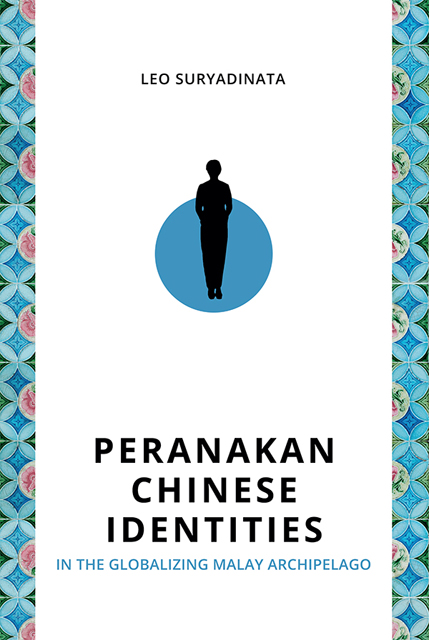Book contents
- Frontmatter
- Contents
- Preface
- Acknowledgements
- Part I Regional Dimensions: Indonesia, Malaysia and Singapore (IMS)
- Part II Focusing on Indonesia
- Appendix 1 The Prospects of the Peranakan Community at the Age of Globalization, by Tan Ta Sen
- Appendix 2 Some Books on the Peranakan Chinese Published between 2007 and 2021
- Bibliography
- Index
- About the Author
9 - Prospects of the Peranakan Community: Comments on Dr Tan Ta Sen’s Speech
Published online by Cambridge University Press: 01 September 2023
- Frontmatter
- Contents
- Preface
- Acknowledgements
- Part I Regional Dimensions: Indonesia, Malaysia and Singapore (IMS)
- Part II Focusing on Indonesia
- Appendix 1 The Prospects of the Peranakan Community at the Age of Globalization, by Tan Ta Sen
- Appendix 2 Some Books on the Peranakan Chinese Published between 2007 and 2021
- Bibliography
- Index
- About the Author
Summary
The Four Periods
Dr Tan Ta Sen, President of the International Zheng He Society (Singapore), gave a speech to the Peranakan Chinese Association in Melaka in 2013, arguing that the “Peranakan [Chinese] community was born during the Cheng Ho [Zheng He] and Western colonial eras. Their main characteristics was at first being localized (indigenized-Malay or Indonesian), then Westernized during the colonial era, and re-Sinicized at the present national stage”.
He divided the Chinese migrations to Melaka and Southeast Asia into “four periods”, the first of which being the “Cheng Ho and [early] colonial period”. Although he did not mention the years of this specific period, I believe he refers to 1405–1643. That is because 1405 was Zheng He’s first voyage while 1643 was the end of the Ming dynasty. He also argued that this was the period when the Peranakan Chinese community came into being in Southeast Asia, and the characteristic of this period is the “localization” of the Chinese. However, the Zheng He period in fact was very brief, i.e. 1405–33. After the demise of Zheng He, the Ming dynasty abandoned the expeditions and China began to be inward looking again. From the post-Zheng He period up to 1643, the Portuguese, Spanish and Dutch came to colonize maritime Southeast Asia.
The second period in Dr Tan’s speech was from 1644 (the beginning of the Qing or Manchu dynasty) to 1840 (the eruption of the Opium War in China). During this period, i.e. between the seventeenth and nineteenth centuries, Southeast Asia countries were colonized by the West. Many Chinese who did not want to live under the Manchu rule left for Southeast Asia; some took refuge in Melaka and became the Peranakans. Dr Tan argued that the Peranakan Chinese culture was in fact a fusion of the “Chinese, Western and Malay cultures”.
The third period, still in the nineteenth century, was after the Opium War (1840). China was then in turmoil and the Chinese came to Southeast Asia in large numbers for better economic opportunity. The number of Chinese new migrants outnumbered the Peranakans, and the Peranakans began to be “re-Sinicized”.
The fourth period started since World War II and lasted until now. Dr Tan argued that the re-Sinicization process which characterized this period remained till the present day. But the process was interrupted by the nation-building projects which took place after the war.
- Type
- Chapter
- Information
- Publisher: ISEAS–Yusof Ishak InstituteFirst published in: 2023

